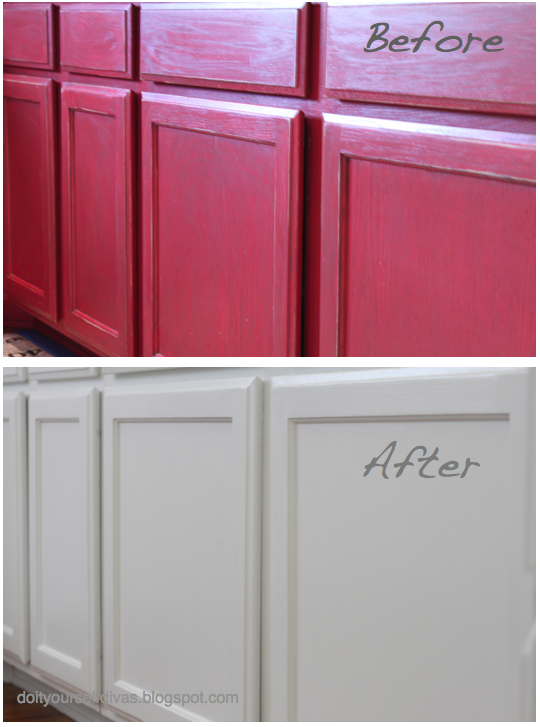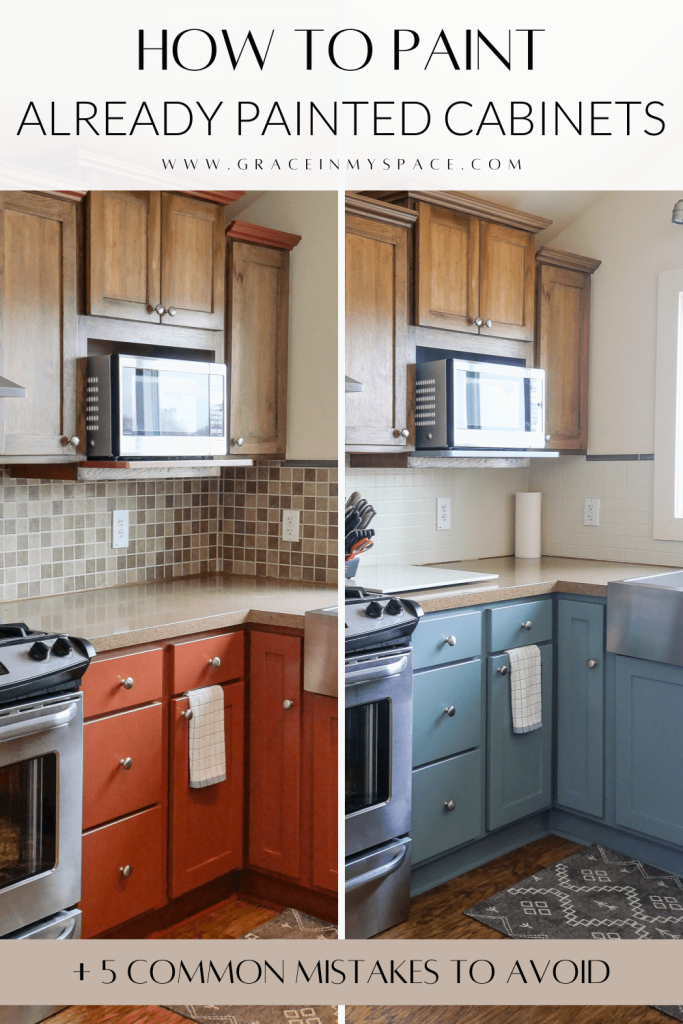Painting over existing cabinets is an affordable and effective way to give your kitchen a fresh new look. With a few simple steps, you can quickly and easily transform your kitchen without the hassle and expense of replacing the cabinets. Whether you are repainting existing cabinets or painting over painted cabinets, the process is the same. With the right preparation, materials, and techniques, you can achieve a professional-quality finish for your kitchen cabinets.
Types of Paint and Finishes for Cabinets
Painting over existing painted cabinets can be a great way to give them a fresh look, but it’s important to consider what type of paint and finish is best for the job. Depending on the type of cabinets, the environment, and the intended purpose, different types of paint and finishes can be used to create the desired effect. Oil-based paints are known for their durability and are best used for cabinets in high-traffic or outdoor areas. They also provide a glossy finish and are easy to clean. Water-based paints are more popular for indoor cabinets, as they dry quickly and don’t produce strong odors. They also provide a smooth finish and are available in a variety of colors. For a more traditional look, lacquers and varnishes can be used to give cabinets a glossy finish. If you’re looking for a more matte finish, flat or eggshell paints are the best option. Regardless of the type of paint and finish you choose, proper preparation is key to achieving the desired results. Sanding, priming, and sealing the cabinets is essential to ensure the paint adheres properly and lasts for years to come.
Preparing the Cabinets Before Painting
Painting over cabinets is a great way to give your kitchen a much needed facelift. However, before you start the project, you need to take some preparatory measures to ensure the paint job goes smoothly. Preparing the cabinets for painting is one of the most important steps in the painting process.
First, you’ll need to thoroughly clean the cabinets with a gentle cleaner to remove dirt and grease. Once you’ve scrubbed the cabinets, you should sand them down using a medium-grit sandpaper. This will help the paint adhere better and create a smoother finish.
Next, you’ll need to fill any cracks or holes with wood putty. Make sure to apply putty generously and allow it to dry before sanding it down again. This will help create an even surface for the paint.
Finally, you’ll need to prime the cabinets. Priming helps create an even surface for the paint and helps it adhere better. There are many different types of primers available, so make sure to choose one that is designed for use on cabinets.
By taking the time to properly prepare the cabinets, you can ensure that the paint job will look great and last for years to come.
Steps for Painting Over Painted Cabinets
Painting over existing painted cabinets is a great way to give them a fresh, new look without the expense and hassle of replacing them. There are a few steps you should take to properly paint over existing cabinets and ensure that the job turns out as well as possible. First, you should ensure your existing cabinets are in good condition and are free of cracks, chips, and other damage. Next, use a sander to lightly sand the surface of the cabinets, removing any existing grease and grime. Be sure to use a fine grit sandpaper to avoid damaging the painted surface. After sanding, use a gentle all-purpose cleaner to clean the surface of the cabinets. Allow the cabinets to dry before continuing. Then, apply a coat of primer to the cabinets and allow it to dry completely. Finally, apply two coats of paint, allowing each coat to dry in between applications. With these simple steps, you can give your cabinets a brand new look and enjoy them for years to come.

How to Add Design Elements to Cabinets
Painting over cabinets is a great way to freshen up the look of a room. But if you’re looking to add a more personalized touch to your cabinets, it’s possible to add design elements to them without having to paint them. By using a variety of materials like stencils, wallpaper, and fabric, you can add an extra layer of visual interest to your cabinets and make them stand out.
One easy way to do this is to stencil a pattern onto the cabinet doors. With a few simple supplies and a bit of creativity, you can create a unique design that adds texture and color to your cabinets. Another popular option is to use wallpaper to cover the cabinet doors. Wallpaper is available in a range of colors and patterns, so you can find something that matches your decor.
Fabric is another great material to use when adding design elements to cabinets. You can get creative by using fabric for cabinet knobs, drawer pulls, or even for covering the cabinet doors. To make your cabinets even more eye-catching, you can add a bit of trim or use different colors of fabric to create a unique pattern.
These are just a few of the ways that you can add design elements to painted cabinets. Whether you want to give your cabinets a simple update or create a one-of-a-kind design, there are plenty of options available to you. By using the right materials and a bit of imagination, you can give your cabinets a unique look that will bring some extra personality to your space.
Common Issues and Solutions for Painting Cabinets
Painting cabinets is a great way to update the look of any room without breaking the bank. Whether you’re giving your kitchen or bathroom a refresh, you may be wondering if you can paint over painted cabinets. The answer is yes, but there are a few important steps you need to take first.
Before you begin, it’s important to assess the condition of your existing paint job. If the paint is cracked, chipped, or peeling, it will need to be removed before you start painting over it. Even if the paint looks good, it’s best to sand it down to ensure a smooth finish. This will also help the primer and paint adhere better.
Once you’ve prepped your cabinets, you’ll need to apply a primer. Primer is essential for adhesion and filling in any blemishes or imperfections on the surface. Make sure to use a primer designed for cabinets and doors, as this will prevent chipping and fading. After the primer has dried, you can apply the top coat of paint. For a professional-looking finish, use two to three coats of paint.
Finally, seal the paint with a clear sealant. This will protect your cabinets from scratches and stains, and it will also help the paint last longer. With these steps, you can give your cabinets a fresh coat of paint that will last for years.
Maintenance Tips for Painted Cabinets
Painting cabinets is a great way to spruce up the look of your kitchen or bathroom without needing to invest in a full remodel. However, many homeowners find themselves asking if they can paint over existing paint on their cabinets. The answer is yes, you can paint over painted cabinets, but it’s important to follow some basic maintenance tips to ensure a successful outcome.
First, make sure the cabinets are properly cleaned and primed before you start painting. This will ensure that the paint sticks to the cabinets and doesn’t flake off over time. Next, use a high-quality paint. This will guarantee a smooth, durable finish that will last for years to come. Finally, make sure to use the appropriate painting techniques. Start with a light coat of paint and gradually build up the layers until you have a uniform finish.
If you follow these maintenance tips for painted cabinets, you will be able to successfully paint over existing paint and enjoy a beautiful, refreshed look in your kitchen or bathroom.
Conclusion
In conclusion, painting over painted cabinets is possible, but the success of the project depends heavily on the condition of the existing paint job and the quality of the new materials used. If the existing paint job is in good condition, you can paint over it with a new color or a new finish. However, if the existing paint job is in bad condition, it may be best to strip the paint and start from scratch. It is important to remember to take the time to properly prepare the surface and use quality materials to ensure the best results.


